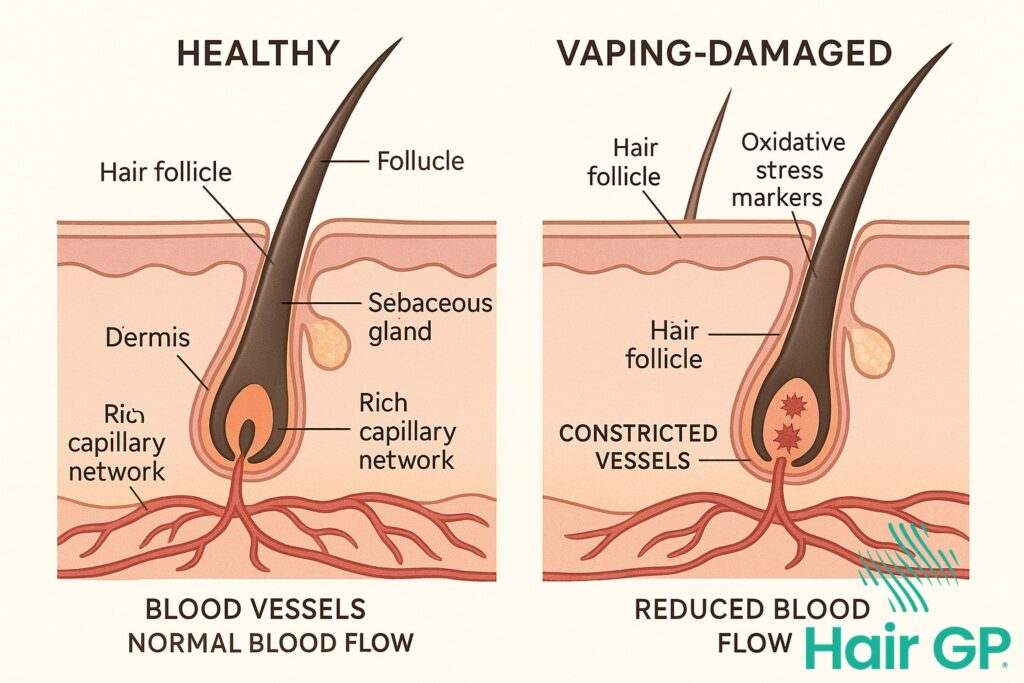Introduction
Understanding your hair density is a crucial yet often overlooked aspect of achieving healthy hair and creating effective care routines. Hair density refers to the number of individual hair strands growing per square inch on your scalp, which is entirely different from hair thickness—the width of each individual strand. Whilst two people might have the same hair thickness, their vastly different hair density levels can require completely different approaches to styling, product selection, and treatment.
Whether you’re struggling with limp, lifeless locks or battling unmanageable volume, your hair density plays a pivotal role in determining the best solutions. Many people mistakenly attribute their hair concerns to other factors when density is actually the key issue. Recognising your specific density type empowers you to make informed decisions about everything from choosing the right haircut to selecting products that work with, rather than against, your natural hair characteristics.
This comprehensive guide will help you accurately identify your hair density level through simple at-home testing methods. You’ll discover the unique characteristics of low, medium, and high density hair types, and learn how various factors—from genetics to scalp health—influence your density over time. We’ll explore tailored management strategies for each density type, including optimal washing routines, styling techniques, and product recommendations. For those concerned about thinning hair, we’ll also examine evidence-based approaches to improving density through nutrition, scalp treatments, and lifestyle modifications. By understanding and working with your hair density, you can unlock the secret to achieving your healthiest, most beautiful hair.
Key Takeaways – TL/DR
- Hair density refers to the number of hair strands per square inch of scalp, not individual strand thickness
- Most people have low, medium, or high density hair, which can be identified through simple visibility tests
- Each density type requires specific care routines, products, and styling techniques for optimal hair health
- Low hair density can be improved through proper nutrition, scalp care, and targeted treatments
- Understanding your hair density helps you choose the right hairstyles and avoid damaging practices
What Is Hair Density and Why It Matters
Hair density refers to the concentration of hair follicles on your scalp, specifically measured as the number of individual hair strands growing per square centimetre or square inch. This fundamental characteristic of your hair is entirely distinct from hair thickness, which measures the diameter of each strand. Understanding this distinction is essential because two people with identical hair thickness can have dramatically different styling needs and product requirements based on their density level.
The average human scalp contains approximately 100,000 to 150,000 hair follicles, with density typically ranging from 124 to 200 hairs per square centimetre. This variation creates the visual difference between sparse, medium, and thick-looking hair, regardless of individual strand width. Your natural hair density is primarily determined by genetics and ethnicity, with Caucasian individuals typically having the highest density, followed by Asian and African hair types.
Recognising your density level profoundly impacts your hair care decisions. High-density hair requires more product to achieve thorough coverage, longer drying times, and often benefits from layering techniques to reduce bulk. Conversely, low-density hair needs lightweight formulations to avoid weighing down individual hair strands and may require volumising techniques to create fullness. Additionally, understanding how hair follicles cycle through growth phases—anagen, catagen, and telogen[1]—helps explain why density can appear to fluctuate over time. This knowledge empowers you to select appropriate styling methods, choose suitable hair texture products, and set realistic expectations for your hair’s appearance and behaviour.
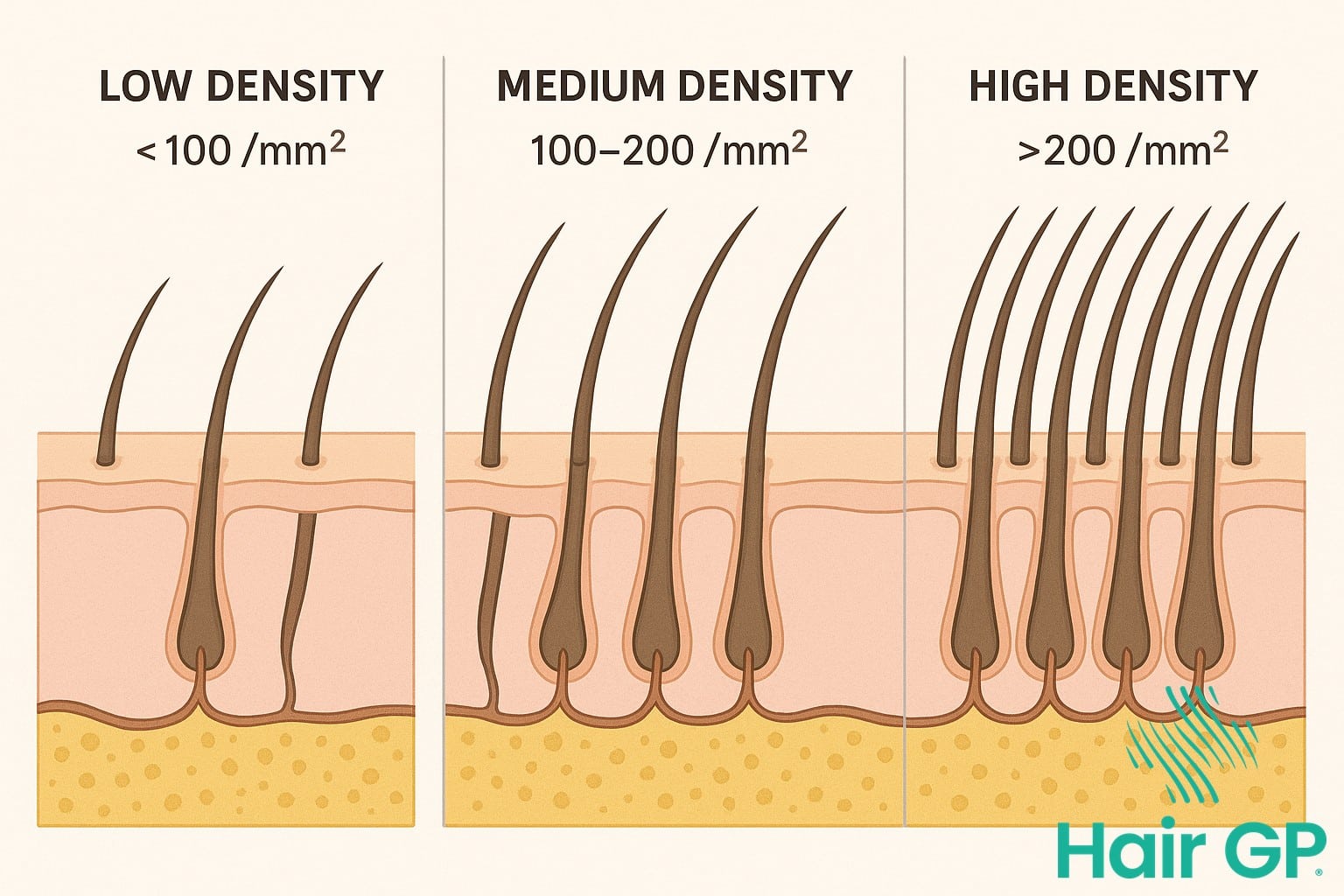
How to Determine Your Hair Density Type
Learning to accurately determine hair density at home empowers you to make informed decisions about your hair care routine. Several reliable methods exist to measure hair density without professional equipment, allowing you to identify whether you have low, medium, or high hair density type.
The Scalp Visibility Test
The scalp visibility test offers the simplest way to assess how much hair covers your scalp. Begin by parting your hair in multiple areas across your head—at the crown, sides, and back—whilst standing in natural light. For accurate results, avoid using harsh overhead lighting that might create shadows. If your scalp is clearly visible through your hair without stretching or pulling, you likely have low density. Medium dense hair shows some scalp visibility, particularly at the parting, whilst high-density hair makes the scalp difficult to see even with deliberate parting. This method works best on clean, dry hair without styling products that might clump strands together.
The Ponytail Circumference Method
To measure hair density using the ponytail method, gather all your hair into a single ponytail at the crown of your head. Using a flexible measuring tape, wrap it around the ponytail just below the hair elastic. Low-density hair typically measures less than 5 centimetres in circumference, medium density ranges from 5 to 10 centimetres, and high-density hair exceeds 10 centimetres[1]. For the most accurate measurement, ensure your hair is completely dry and free from tangles. Avoid pulling too tightly, as this can compress the hair and give false readings. This method provides a quantitative approach to determine hair density, complementing the visual assessment from the scalp visibility test.

Understanding Different Hair Density Levels
Hair density varies significantly from person to person, influencing everything from styling choices to product selection. Understanding whether you have low, medium, or high density hair helps you develop a personalised care routine that maximises your hair’s potential whilst addressing its unique challenges.
Low Density Hair Characteristics
Low density hair contains fewer hair strands per square inch, often resulting in visible scalp when hair is down or parted. This hair type requires lightweight, volumising products that won’t weigh down delicate strands. Volume-building techniques like root lifting and strategic layering can create the illusion of fuller hair. Those with low density benefit from avoiding heavy oils and creams, instead opting for mousses and sprays that add body without buildup.
Medium Density Hair Features
Medium density hair represents the most common category, offering balanced styling versatility. With moderate scalp visibility only when hair is parted, this density type accommodates various product weights and styling methods. Medium density allows flexible styling options, from sleek looks to voluminous styles, without requiring excessive product or complicated techniques. This adaptable hair type responds well to both lightweight and moderately rich formulations.
High Density Hair Traits
High density hair contains more hair per square inch, resulting in minimal scalp visibility and substantial volume. This abundance suggests high density requires heavier styling products and often benefits from strategic layering to prevent overwhelming bulk. Managing high density hair involves using rich creams, oils, and serums to control volume whilst maintaining definition and preventing frizz.
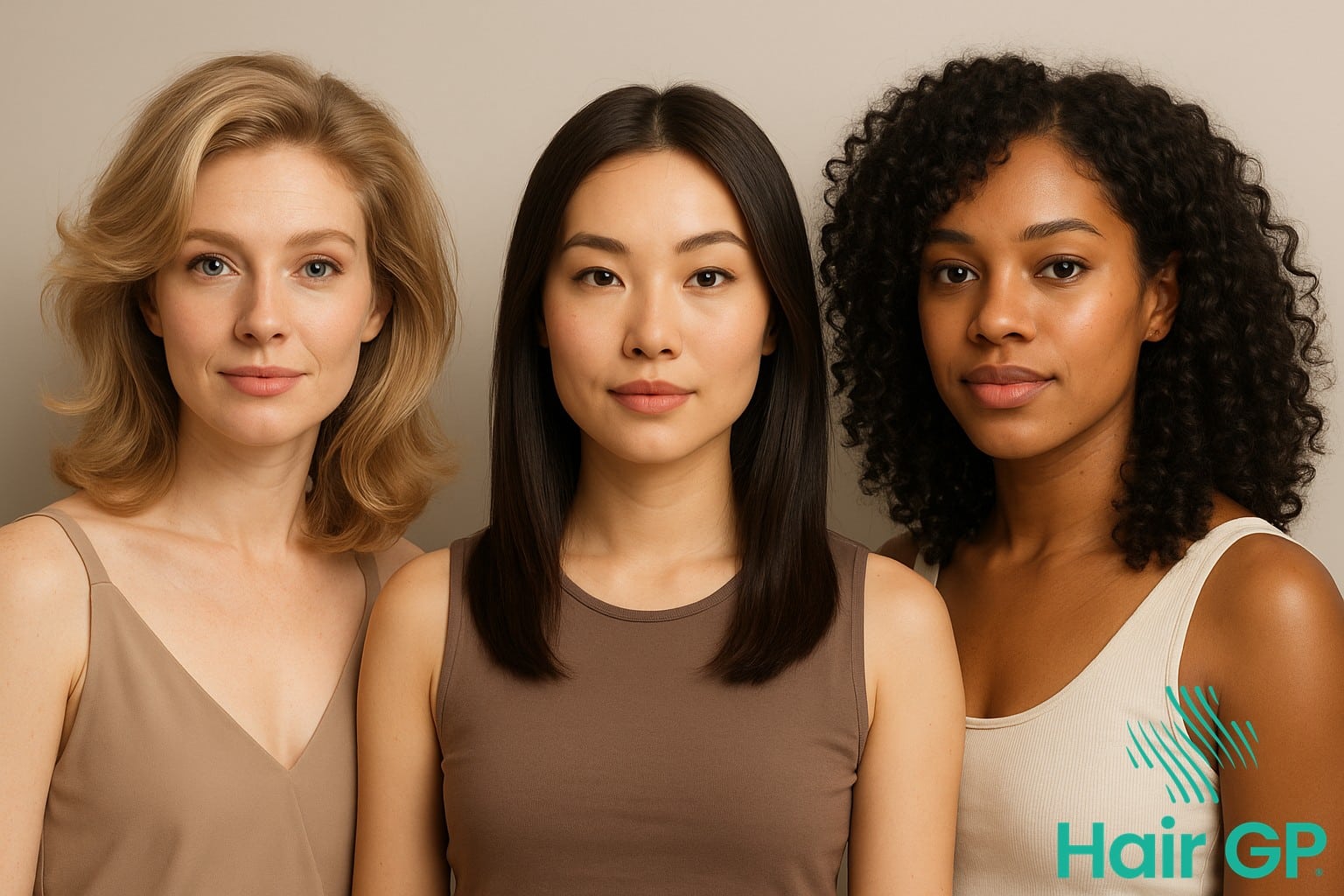
Factors That Affect Hair Density
Multiple factors influence hair density throughout an individual’s lifetime, with genetics serving as the primary determinant of natural density. Your genetic blueprint dictates the number of follicles present on your scalp, typically ranging from 100,000 to 150,000 hair follicles, which establishes your baseline hair density from birth.
Hormonal fluctuations significantly impact the hair growth cycle and overall density. Androgens, particularly dihydrotestosterone (DHT), can miniaturise follicles and contribute to hair loss, whilst thyroid hormones regulate the growth phase duration [2]. Pregnancy, menopause, and hormonal disorders often trigger noticeable density changes through their effects on follicular activity.
Nutritional status profoundly affects hair health and density maintenance. Deficiencies in iron, vitamin D, zinc, and protein can disrupt normal follicular function and accelerate hair loss [3]. A balanced diet supporting a healthy scalp environment promotes optimal follicular performance and preserves existing density.
Environmental stressors, including UV exposure, pollution, and chemical treatments, gradually damage follicles and compromise density. Age-related changes naturally reduce follicular activity, with most individuals experiencing progressive thinning after age 40. Lifestyle factors such as stress, smoking, and inadequate sleep further influence follicular health, potentially accelerating density reduction beyond genetic predisposition.
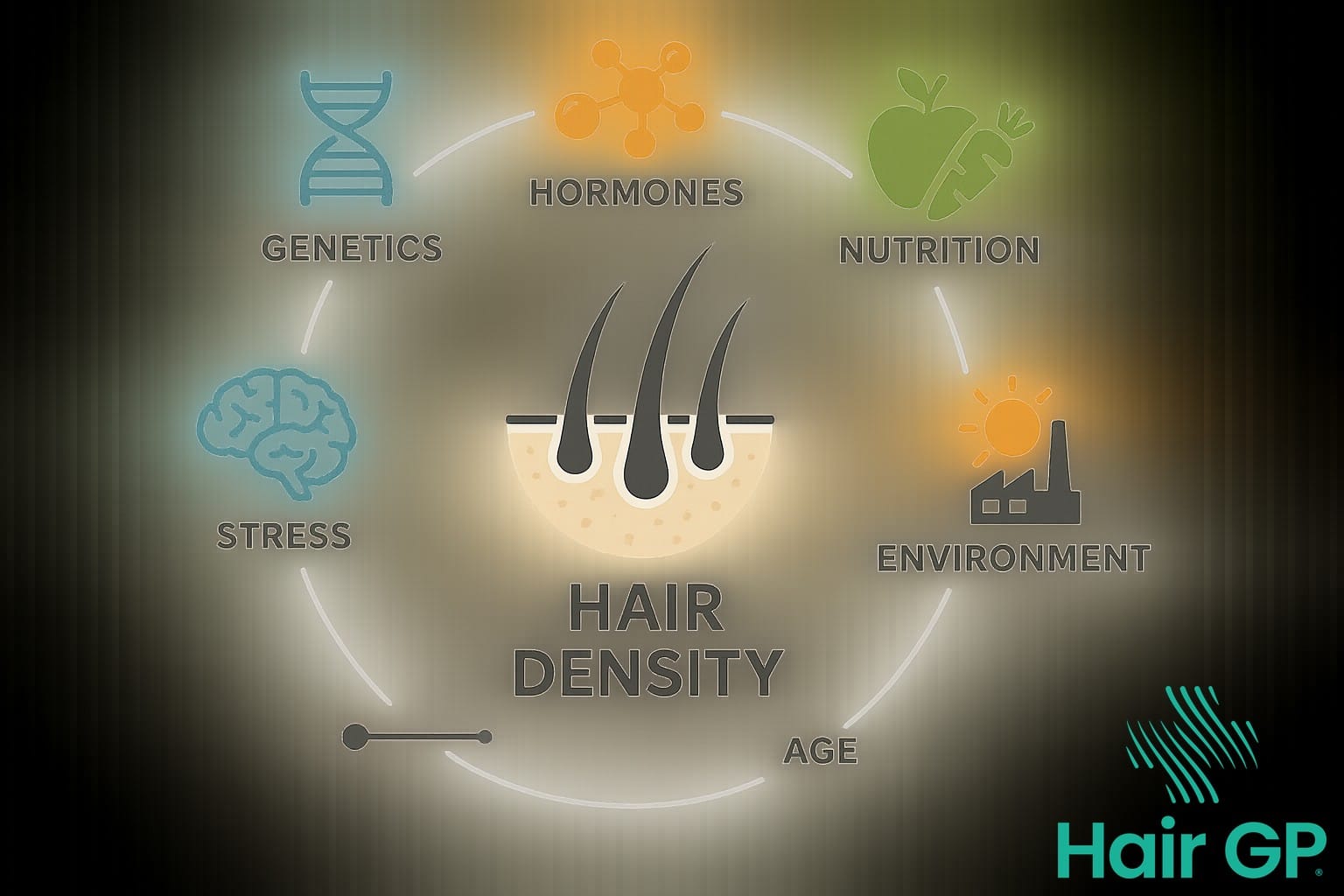
Managing Different Hair Density Types
Understanding your unique hair density is crucial for developing an effective care routine that maximises your hair’s natural beauty. From selecting the right hair products to mastering appropriate styling techniques, each density type requires a tailored approach that addresses its specific needs and challenges.
Product Selection by Density
Low-density hair thrives with lightweight formulations that won’t weigh down delicate strands. Opt for volumising mousses and dry shampoos that add lift without residue. Medium-density hair benefits from balanced products that provide moisture without heaviness, such as leave-in conditioners and light styling creams. High-density hair can handle heavier styling products, including rich masks and thick creams that help reduce frizz and define texture whilst managing volume effectively.
Styling Techniques for Your Density
For low-density hair, focus on root-lifting techniques and avoid over-layering products. Try blow-drying with a round brush to create volume. Medium-density hair enjoys versatility with most hairstyles, from sleek straight looks to textured waves. High-density hair benefits from thinning techniques and strategic layering to prevent tangles and reduce bulk. Consider using smoothing serums and wide-tooth combs to manage thickness whilst embracing your hair’s natural fullness.
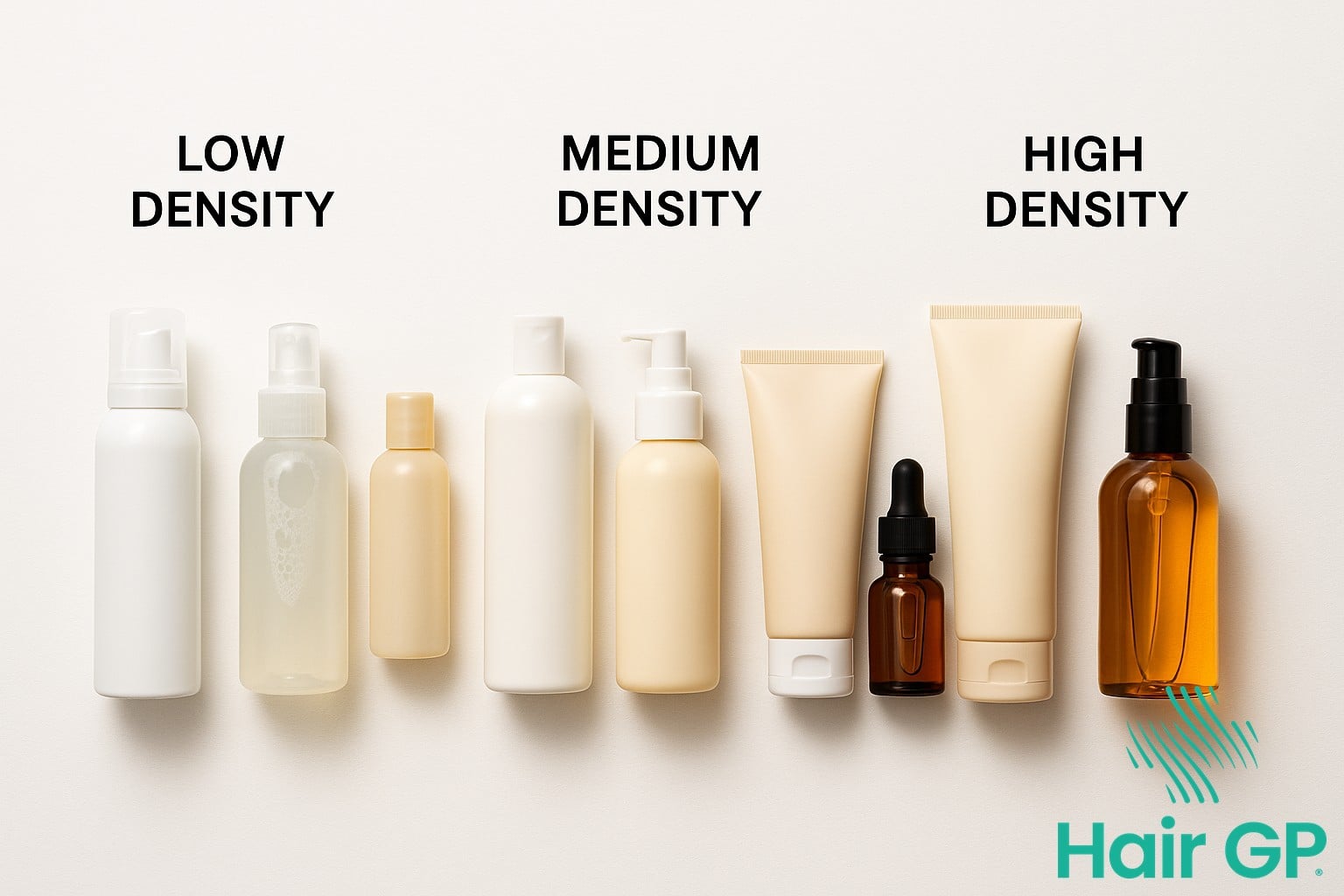
Treating and Improving Low Hair Density
Treating low hair density requires a multifaceted approach combining medical interventions, nutritional support, and scalp health optimisation. Minoxidil remains the gold standard topical treatment for some causes of hair thinning, with studies demonstrating its ability to increase hair density by promoting follicular growth and extending the anagen phase. Clinical trials show 2% and 5% formulations can improve hair count by 12-18% over 24 weeks[4]. However, consistent daily application is essential for maintaining results.
Nutritional deficiencies significantly impact hair growth and density. Addressing insufficient levels of iron, vitamin D, and zinc through targeted supplementation can support higher hair density. Additionally, ensuring adequate protein intake (1.2-1.6g per kilogram body weight) provides essential amino acids for keratin production.
Scalp health directly influences hair loss and regrowth potential. Weekly scalp massages increase blood circulation, whilst gentle exfoliation removes buildup that can clog follicles. Combining these practices with evidence-based treatments typically yields visible improvements within 3-6 months, though individual results vary based on underlying causes and treatment adherence.
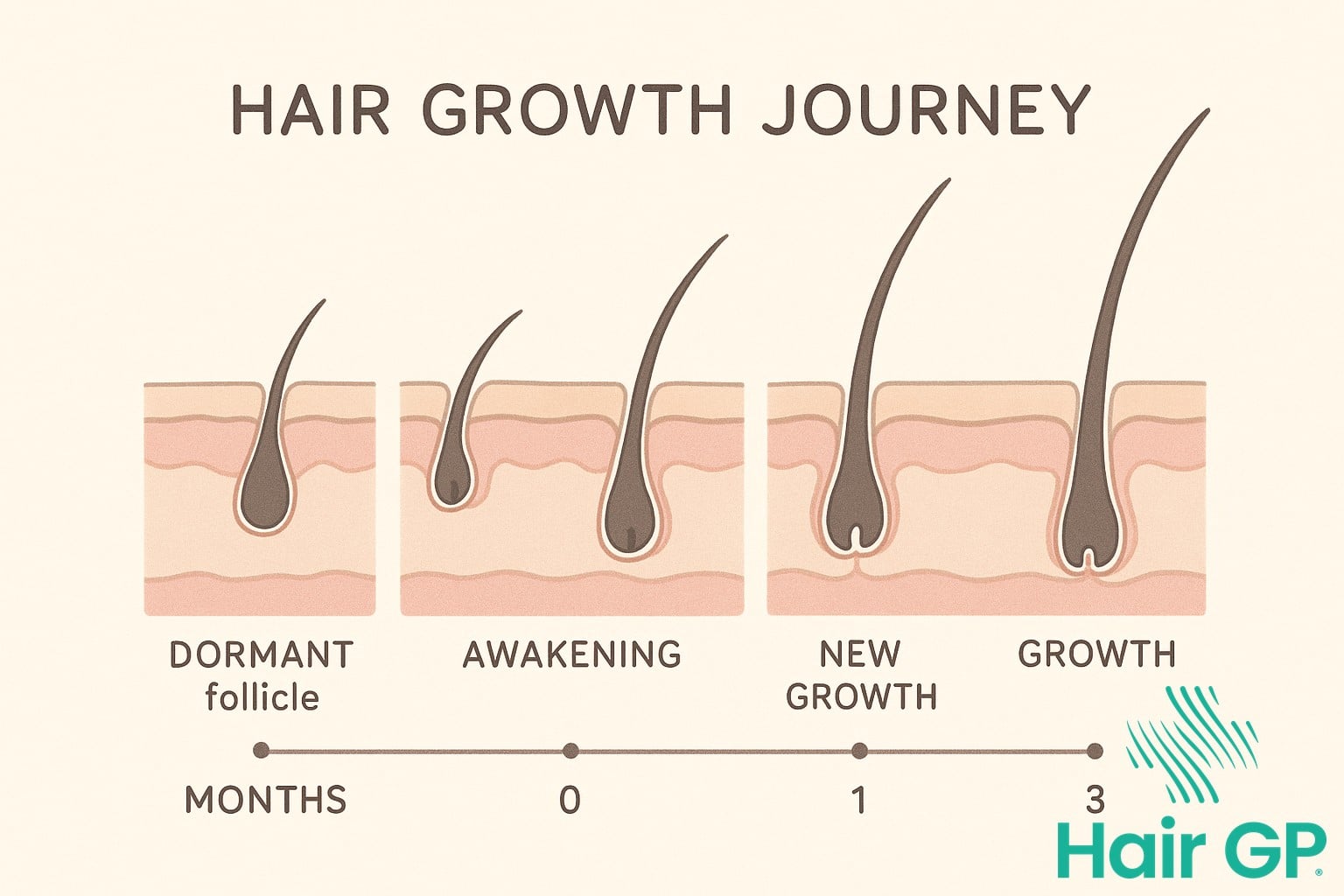
Conclusion
Understanding your hair density marks the first step towards achieving truly healthy hair. Throughout this guide, we’ve explored various methods to identify your density level, from the scalp visibility test to the ponytail circumference measurement. Each technique provides valuable insights into your unique hair characteristics, empowering you to make informed decisions about your hair care routine.
Whether you have low, medium, or high hair density, embracing your natural hair types remains essential for long-term hair health. Remember that density differs from thickness – understanding this distinction helps you select appropriate products and styling techniques. Your scalp health directly influences hair growth patterns and overall density, making proper scalp care fundamental to any hair care regimen.
Whilst genetics largely determine your baseline density level, implementing targeted care strategies can optimise your hair’s potential. Focus on nourishing treatments, gentle handling, and products specifically formulated for your density type. With patience and consistency, you’ll notice improvements in manageability, appearance, and overall hair health. Every hair density has its unique beauty and advantages – the key lies in understanding and working with what nature has given you, rather than against it.
Frequently Asked Questions
Yes, hair density can change due to aging, hormonal fluctuations, nutritional status, stress, and medical conditions. While genetics determine your baseline density, various factors can cause temporary or permanent changes throughout life.
No, hair density refers to the number of hair strands per square inch of scalp, while hair thickness describes the diameter of individual hair strands. You can have fine hair with high density or thick hair with low density.
Shorter to medium-length cuts with layers work best for low density hair as they create the illusion of fullness. Blunt cuts, bobs, and pixie cuts can make hair appear thicker, while very long styles may emphasize thinness.
Yes, chronic stress can trigger telogen effluvium, causing temporary hair shedding and reduced density. Managing stress through relaxation techniques, exercise, and adequate sleep can help maintain healthy hair density.
References
- Hoover E, Alhajj M, Flores JL. Physiology, Hair. In: StatPearls. Treasure Island (FL): StatPearls Publishing; 2023. PMID: 29763123
- Trüeb RM. Molecular mechanisms of androgenetic alopecia. Exp Gerontol. 2002. PMID: 12213548
- Almohanna HM, Ahmed AA, Tsatalis JP, Tosti A. The Role of Vitamins and Minerals in Hair Loss: A Review. Dermatol Ther (Heidelb). 2019. PMID: 30547302
- Olsen EA, Dunlap FE, Funicella T, Koperski JA, Swinehart JM, Tschen EH et al.. A randomized clinical trial of 5% topical minoxidil versus 2% topical minoxidil and placebo in the treatment of androgenetic alopecia in men. J Am Acad Dermatol. 2002. PMID: 12196747




